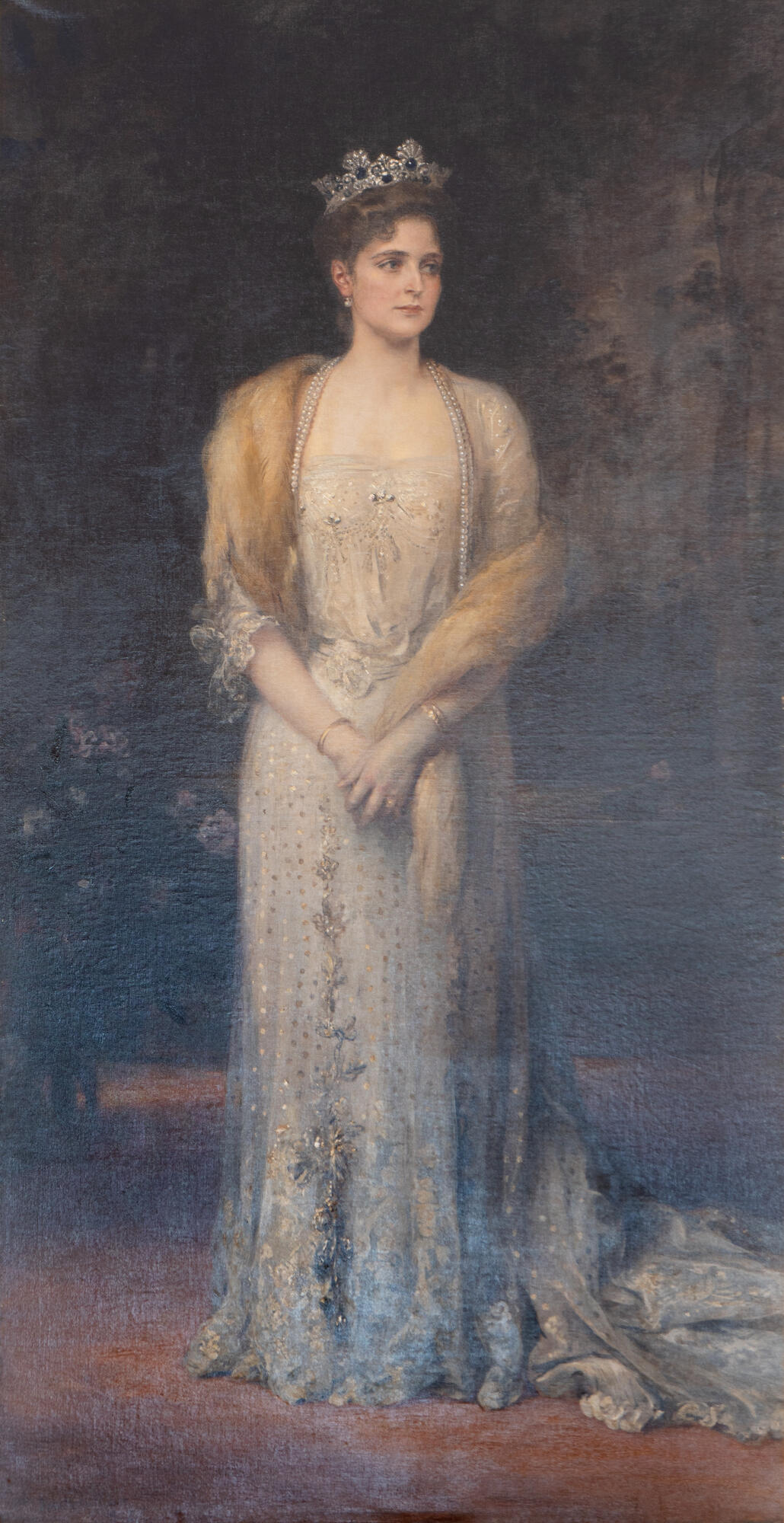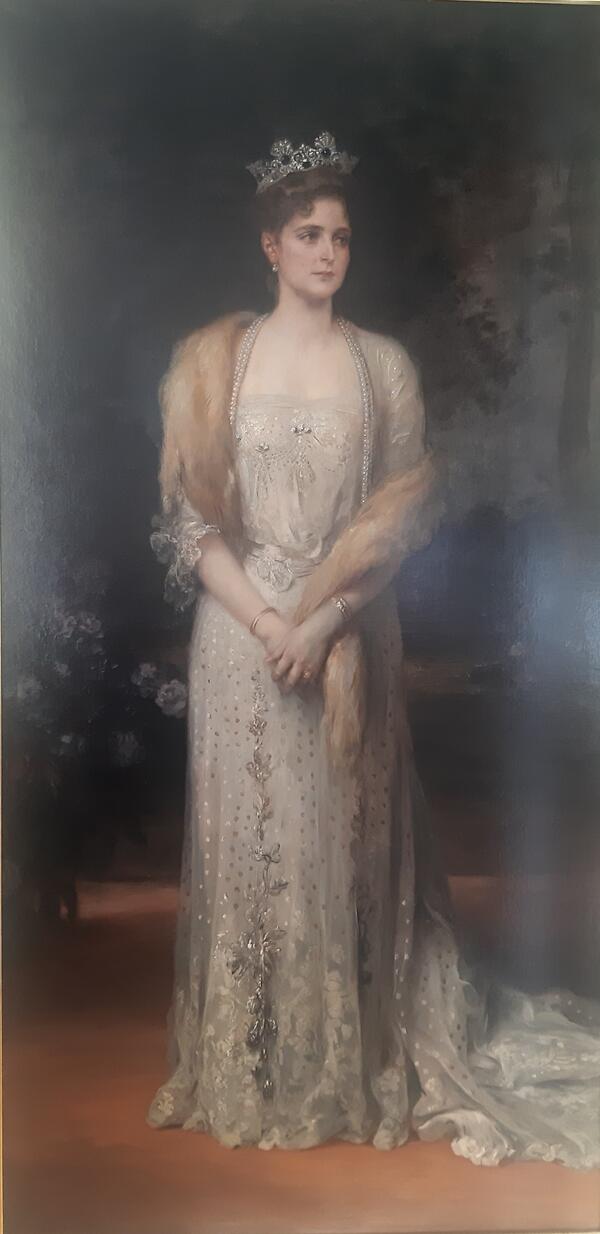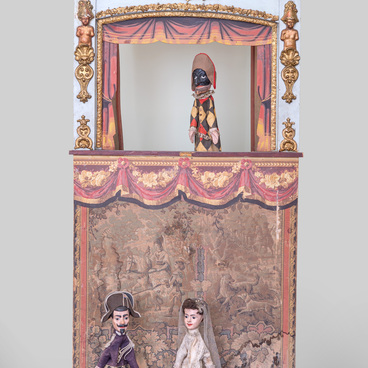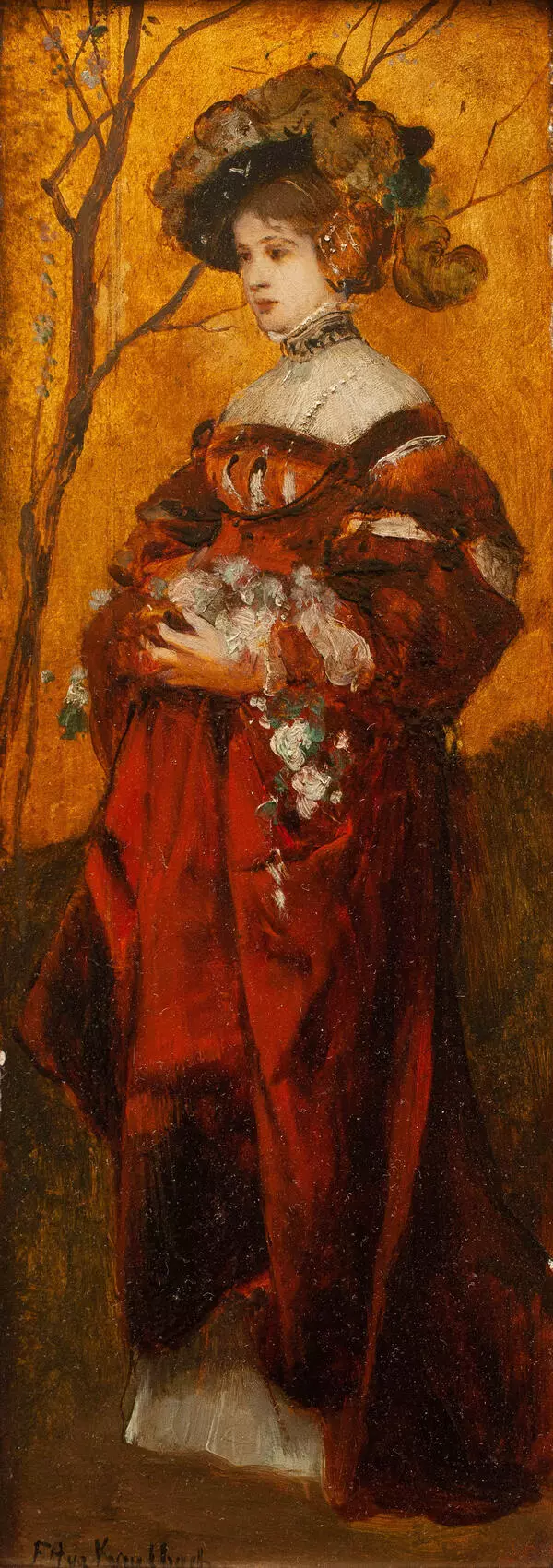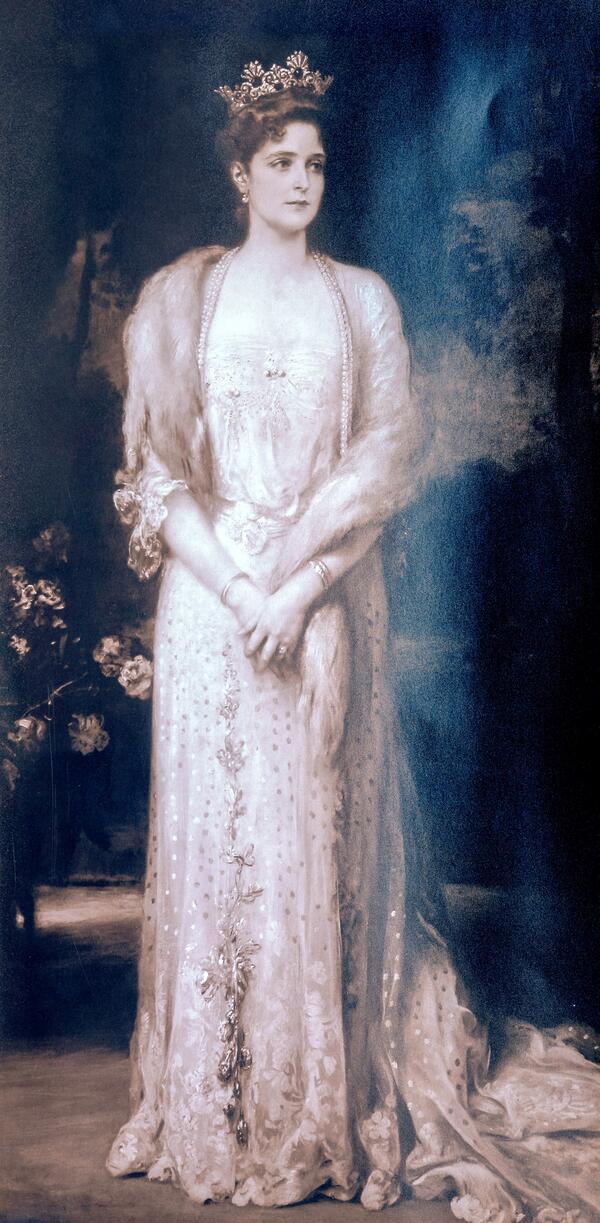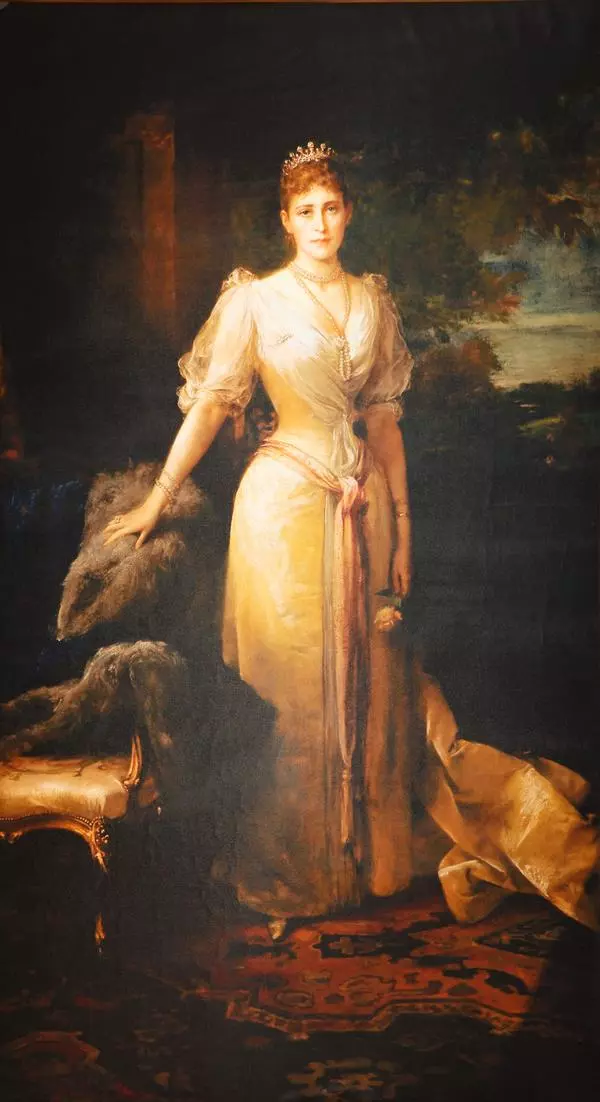The portrait of Empress Alexandra Feodorovna by the German artist Friedrich August von Kaulbach occupies the western wall of the Corner Drawing Room of the Alexander Palace. A master of allegory and historical painting, von Kaulbach is best known for his dreamlike portraits of women. The private rooms of the imperial couple in the Alexander Palace housed a significant number of this artist’s works — portraits of members of the imperial family and allegorical pictures.
Kaulbach’s ceremonial portrait shows the Mistress of the Alexander Palace in full-length, wearing an elegant pearl-gray ball gown trimmed with lace and sequins, a sable stole, and a long, heavy strand of pearls. Such an attire quite accurately conveys the Empress’ tastes: Alexandra Feodorovna preferred formal and somewhat conservative dresses with beautifully flowing pleats that visually lengthened her figure. Pastel-colored dresses and ensembles that matched her complexion and statuesque figure were prevalent in the Empress’s closet.
The Empress did not like the frivolous dresses a la Directoire (“Dresses of the Directory”) with their high waists and daring necklines that came into fashion. Nor did she find it acceptable to wear exotic garments such as colorful Chinese-style gowns. According to the close circle of the Empress, Alexandra Feodorovna was rather indifferent to the fashionable trends of her time. The exceptions were the outfits of the Brizak fashion house and the atelier of Nadezhda Lamanova.
Albert Brizak owned a St. Petersburg ladies’ fashion atelier, which enjoyed great fame in the late 19th and early 20th centuries. As early as the mid –1880s, Empress Maria Feodorovna, spouse of Tsar Alexander III, as well as almost the entire imperial family were among the clients of the “Albert Brizak” trading house. Later Empress Alexandra Feodorovna and her four daughters became clients of the House.
Nadezhda Petrovna Lamanova (1861–1941) came from a family of impoverished nobles in Nizhny Novgorod Province. Trained at the Suvorova School of Cutting and Sewing in Moscow, she went to work in the Voytkevichi workshop, where two years later she became the leading dressmaker. Soon Lamanova opened her first retail store of fashion and haberdashery goods and eventually emerged as one of the most popular fashion designers in Moscow. In 1898, she was granted the title of Supplier to the Court of Her Imperial Highness Elizaveta Feodorovna, and from October 1904 Nadezhda Petrovna became a supplier to the Court of Her Imperial Majesty Alexandra Feodorovna.
Kaulbach’s ceremonial portrait shows the Mistress of the Alexander Palace in full-length, wearing an elegant pearl-gray ball gown trimmed with lace and sequins, a sable stole, and a long, heavy strand of pearls. Such an attire quite accurately conveys the Empress’ tastes: Alexandra Feodorovna preferred formal and somewhat conservative dresses with beautifully flowing pleats that visually lengthened her figure. Pastel-colored dresses and ensembles that matched her complexion and statuesque figure were prevalent in the Empress’s closet.
The Empress did not like the frivolous dresses a la Directoire (“Dresses of the Directory”) with their high waists and daring necklines that came into fashion. Nor did she find it acceptable to wear exotic garments such as colorful Chinese-style gowns. According to the close circle of the Empress, Alexandra Feodorovna was rather indifferent to the fashionable trends of her time. The exceptions were the outfits of the Brizak fashion house and the atelier of Nadezhda Lamanova.
Albert Brizak owned a St. Petersburg ladies’ fashion atelier, which enjoyed great fame in the late 19th and early 20th centuries. As early as the mid –1880s, Empress Maria Feodorovna, spouse of Tsar Alexander III, as well as almost the entire imperial family were among the clients of the “Albert Brizak” trading house. Later Empress Alexandra Feodorovna and her four daughters became clients of the House.
Nadezhda Petrovna Lamanova (1861–1941) came from a family of impoverished nobles in Nizhny Novgorod Province. Trained at the Suvorova School of Cutting and Sewing in Moscow, she went to work in the Voytkevichi workshop, where two years later she became the leading dressmaker. Soon Lamanova opened her first retail store of fashion and haberdashery goods and eventually emerged as one of the most popular fashion designers in Moscow. In 1898, she was granted the title of Supplier to the Court of Her Imperial Highness Elizaveta Feodorovna, and from October 1904 Nadezhda Petrovna became a supplier to the Court of Her Imperial Majesty Alexandra Feodorovna.
